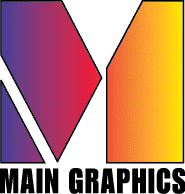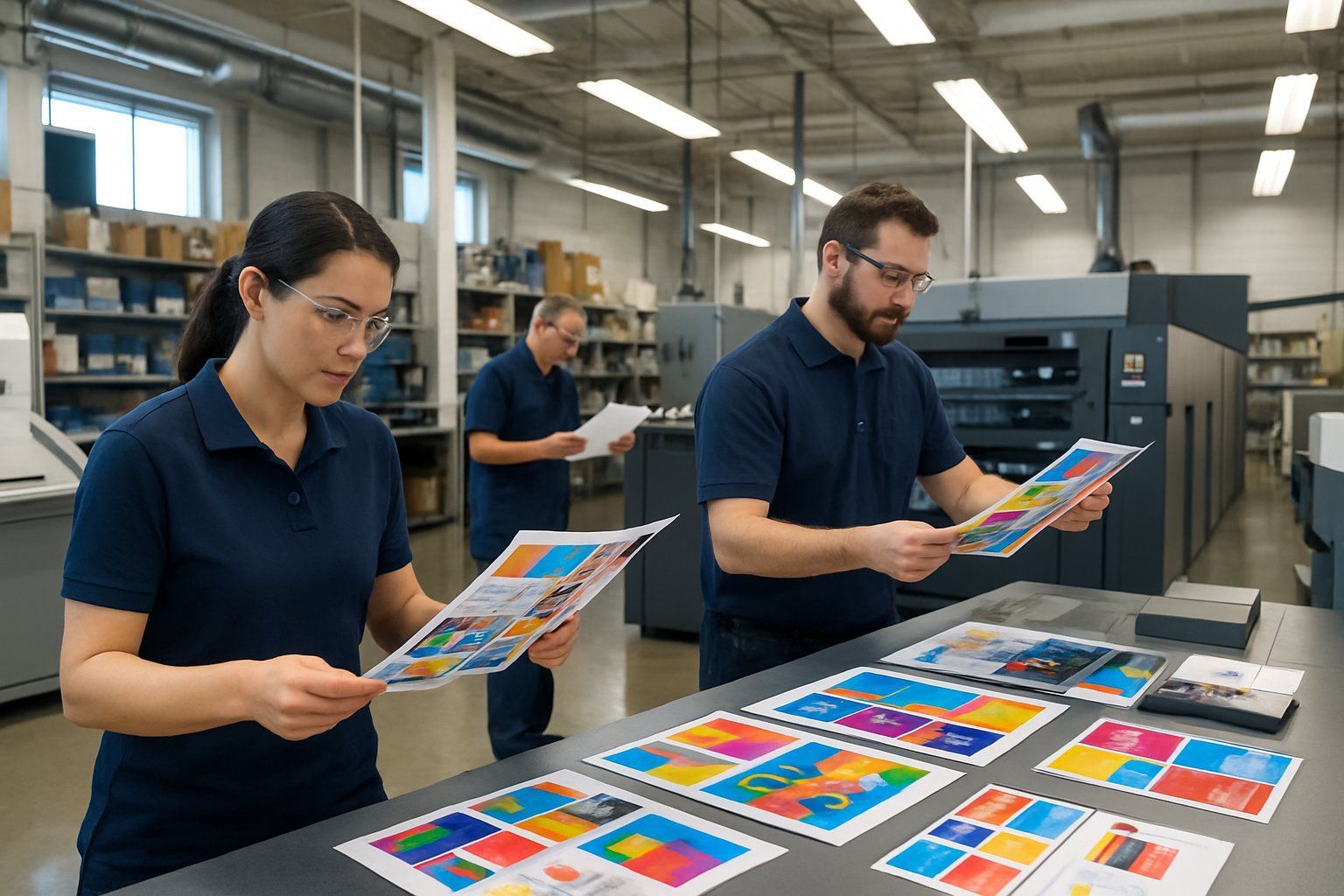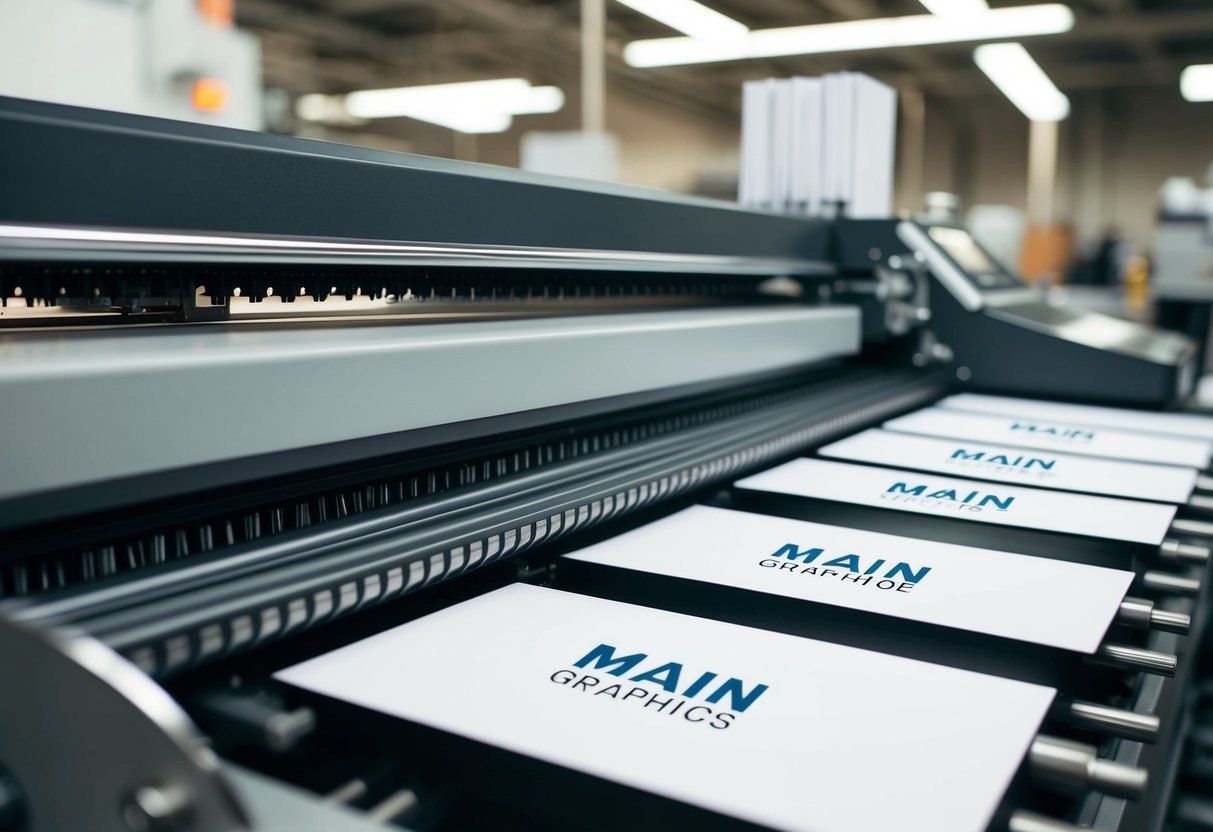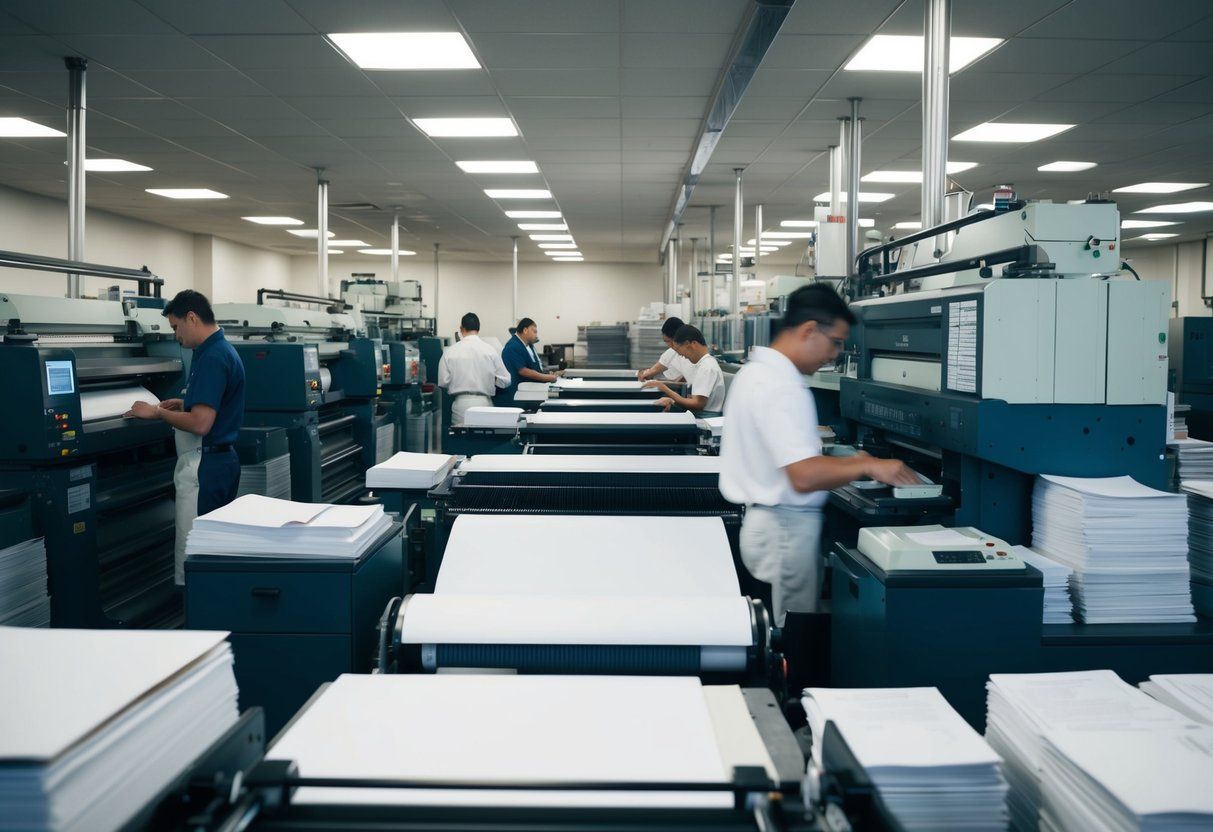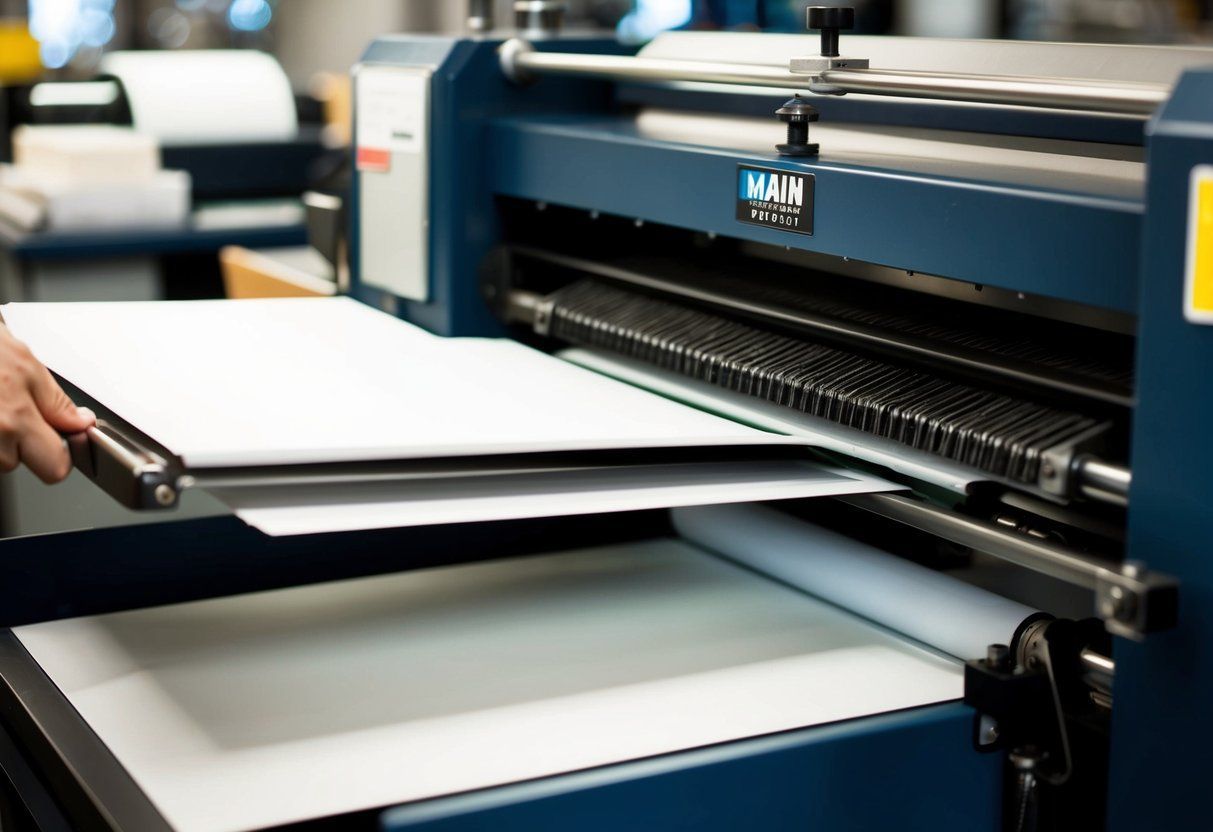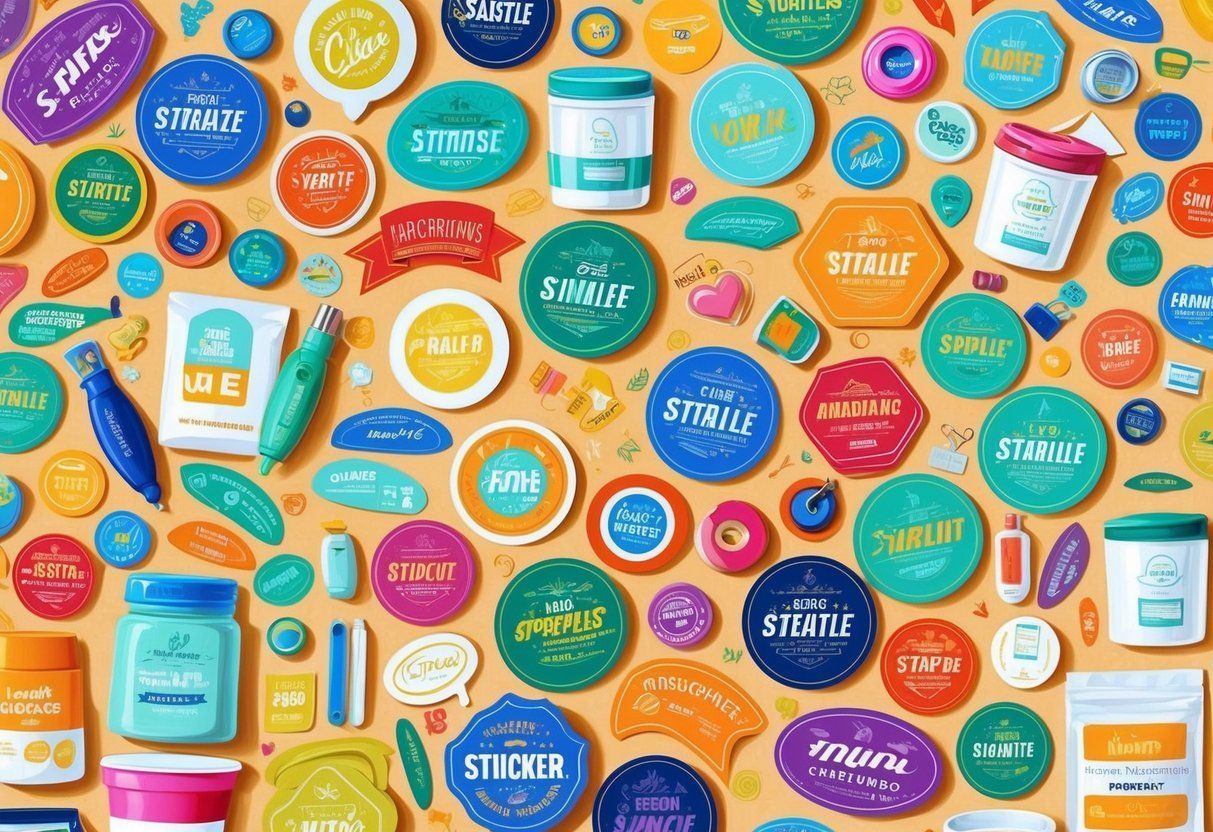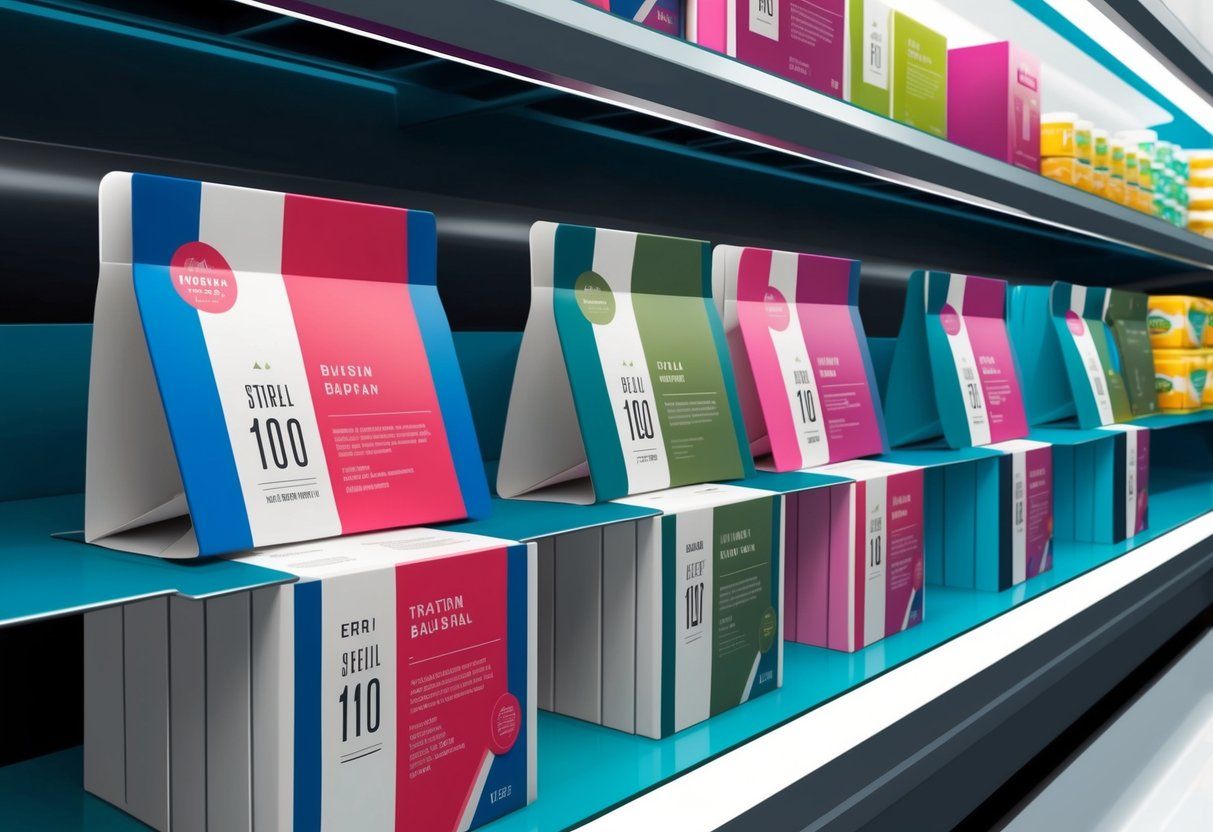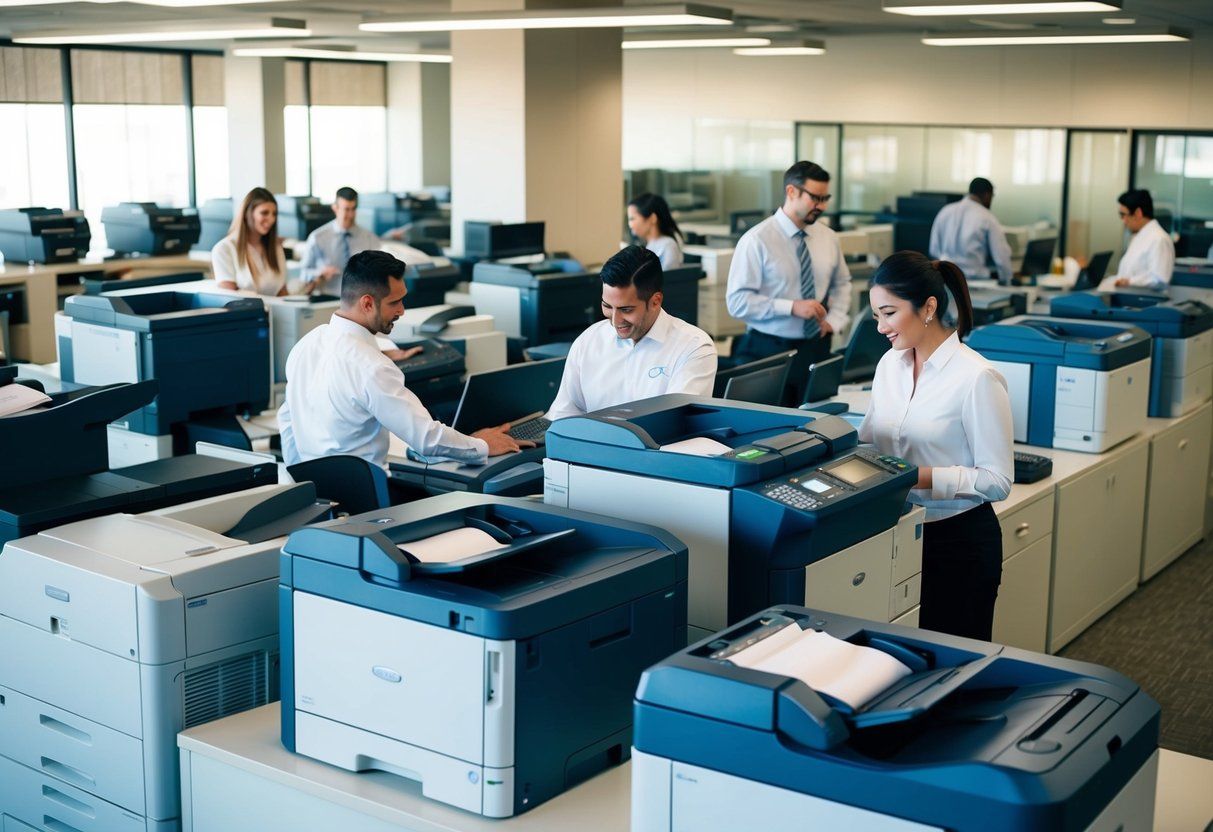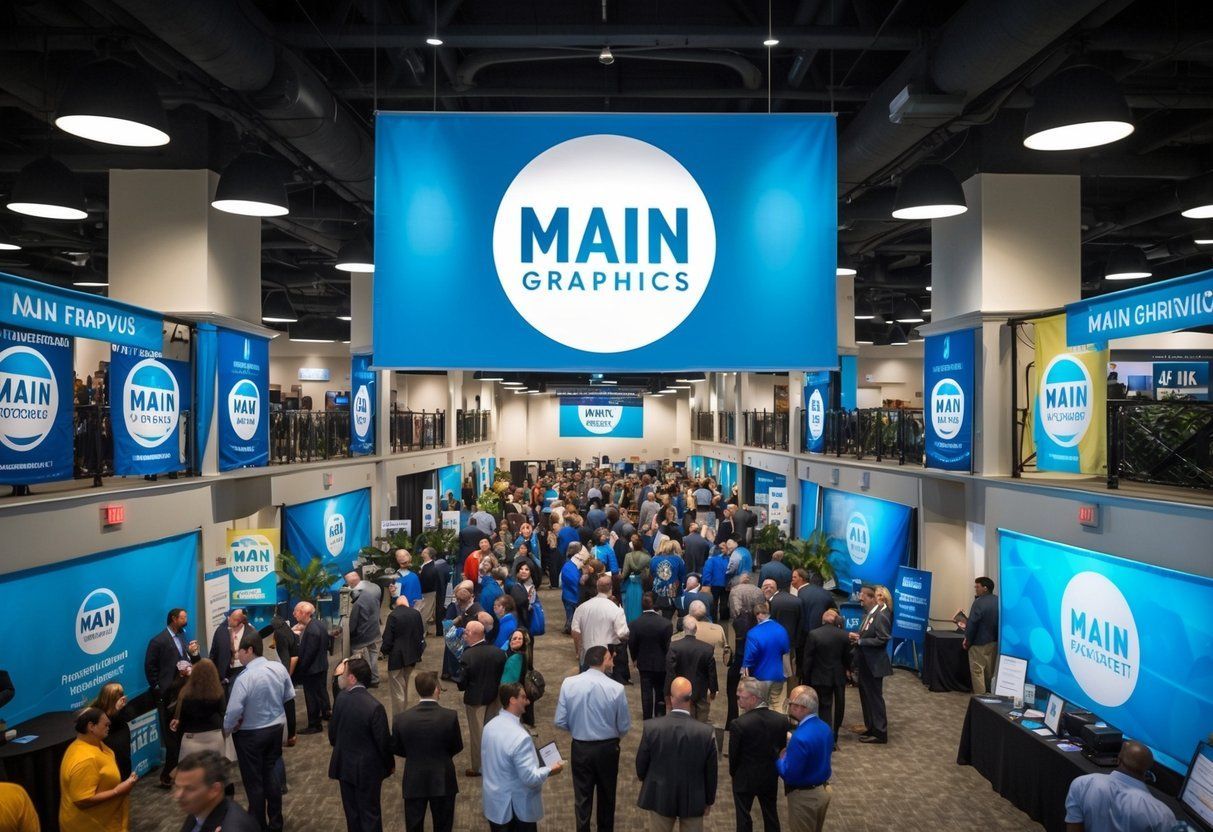Commercial Printing Trends: Navigating the Industry’s Future
Commercial printing is a dynamic industry that serves as the backbone for a multitude of sectors by providing essential printing services. It encompasses a wide range of processes from traditional offset printing to modern digital outputs , addressing the needs of marketing, packaging, publishing, and much more. As technology evolves, so too does the commercial printing landscape, adapting new methods to improve efficiency, quality, and customization options for clients.
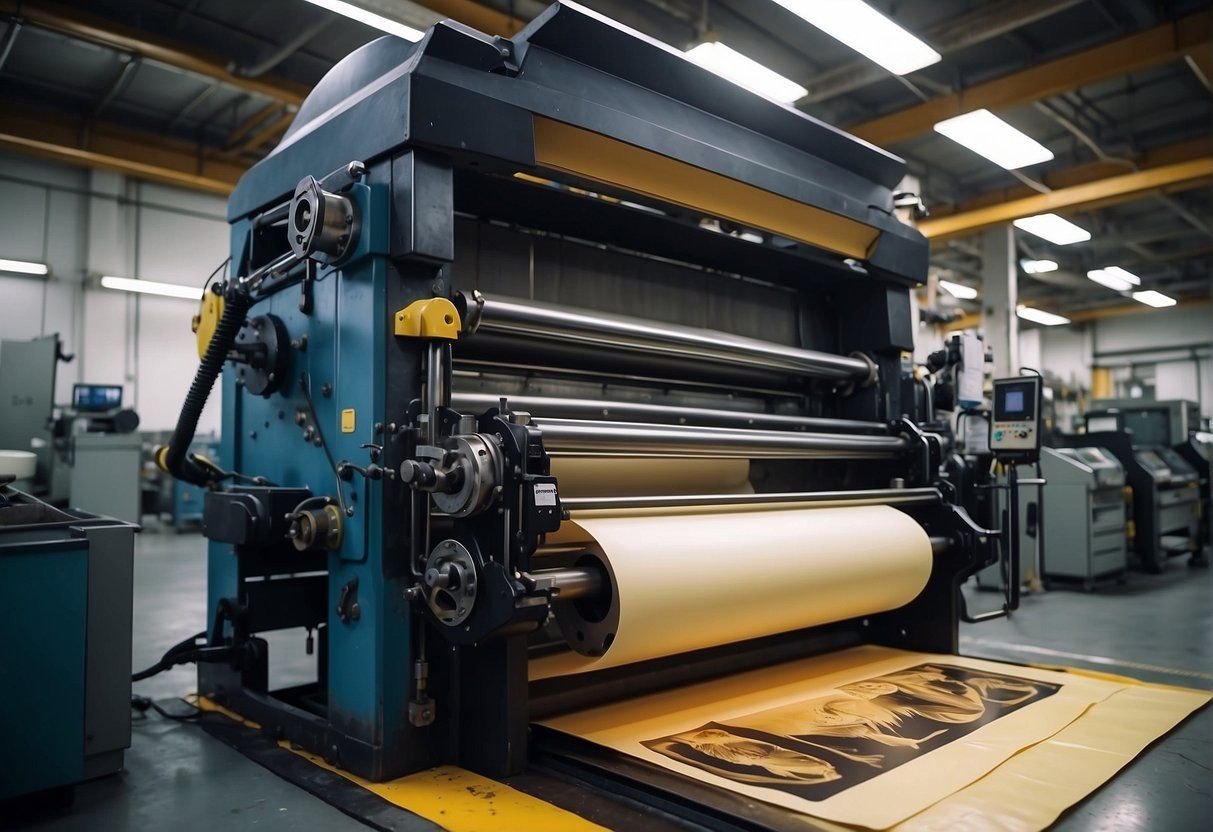
The variety of materials and products that can be printed is expansive, including everything from business cards and brochures to large-scale banners and intricate packaging solutions. This versatility is crucial for businesses looking to establish their brand identity and communicate with potential customers. Additionally, commercial printing companies are increasingly embracing sustainability, aiming to lessen the environmental impact of their operations through recycling programs, eco-friendly inks, and sustainable paper sources.
Key Takeaways
- Commercial printing offers an array of services for diverse industry needs.
- Advancements in printing technologies enhance quality and customization.
- Sustainable practices are becoming more integral to the printing process.
Overview of Commercial Printing
Commercial printing refers to the large-scale printing of materials for various business purposes. This industry encompasses a wide range of services, from the production of brochures and business cards to large format graphics and books. It remains integral to marketing and communication strategies across multiple sectors.
The industry focuses on quality printing processes to ensure that the final products meet clients’ expectations. These processes use advanced printing equipment that can handle large orders efficiently while maintaining high-quality standards. Technologies such as offset lithography, digital printing, and flexography are commonly employed. Each offers unique advantages in terms of print quality, speed, and cost-effectiveness.
Key Components of the Industry:
- Printing Equipment: Ranging from traditional presses to modern digital printers.
- Materials: Includes paper, ink, and various finishing products.
- Services: Design, prepress, printing, finishing, and binding.
The commercial printing industry has adapted to the digital age by integrating online platforms that streamline ordering and proofing processes. These advancements have also led to personalized and variable data printing, offering new marketing potentials for businesses.
| Factor | Description |
|---|---|
| Volume | Tailored to handle large-scale print runs efficiently. |
| Customization | Offers clients a wide array of options in size, format, ink, and substrate. |
| Turnaround | Capable of quick production due to advanced technological integration. |
The industry prioritizes not only the quantity but also the fidelity of colors, precision of details, and durability of the print material. These aspects are essential to maintaining a corporate image and effectively communicating brand messages.
Commercial Printing Services
Commercial printing services encompass a robust range of procedures from concept design to distribution, each critical for producing high-quality printed materials.
Design and Prepress
Design and Prepress services are foundational to commercial printing, where a professional design team transforms ideas into print-ready files. Prepress includes the creation and optimization of digital files, with graphic designers ensuring that colors, dimensions, and resolutions match the desired outcome. Error detection in this stage is imperative to avoid costly revisions during actual printing.
Printing Options
Various Printing Options cater to different needs and scales of print jobs. Digital Printing is efficient for smaller, on-demand print runs with a quick turnaround. In contrast, Offset Printing excels in large-scale production, delivering superior quality printing for high-volume orders. Providers often guarantee vibrancy and clarity, applying UV Coatings and finishes to enhance product longevity and appearance.
Finishing and Binding
After printing, materials undergo Finishing and Binding . Finishing may involve cutting, folding, or applying decorative elements, while binding methods like stapling, perfect binding, or spiral binding provide structure to printed materials. The consistency and quality of finishes are a testament to a service’s attention to detail.
Fulfillment and Distribution
Fulfillment and Distribution services embody the final steps of commercial printing, where completed products are managed and delivered. This includes inventory management , mailing , and direct mail services. Reliable fulfillment processes, coupled with responsive customer service, ensure that the end product is distributed efficiently and aligns with client expectations.
Printing Technologies
Printing technology has evolved to offer a variety of methods to suit different project requirements ranging from digital and offset to other traditional forms. These technologies differ fundamentally in their approach to transferring ink to paper and in their efficiency levels, catering to diverse printing needs.
Digital Printing
Digital printing refers to the process of transferring a digital-based image directly to a variety of media. It primarily supports on-demand printing , providing a quick turnaround due to minimal set-up time. This technology leverages either inkjet or laser printers which spray the ink or use toners, respectively. Digital printing is ideal for short-run jobs and where high levels of customization, such as variable data printing, are required. Among its advantages are:
- Automation : Streamlined workflow enabled by digital technology.
- High quality : Consistent images and the ability to print fine details.
Offset Printing
Offset printing, also known as lithography, is the dominant commercial printing technology. It involves the transfer of ink from a plate to a rubber blanket, then to the printing surface. The process can be used for sheet-fed or web printing. Sheet-fed offset presses are commonly used for small to medium-sized jobs, while web-fed presses are used for high-volume printing like newspapers. Features include:
- Ink : Oil-based inks used for longevity.
- Efficiency : Cost-effective for high-volume jobs due to economies of scale.
Other Printing Methods
Alternative printing methods serve niche markets and specific applications:
- Screen Printing : This method pushes ink through a mesh stencil, usually used for textiles and irregular surfaces.
- Engraving : A technique where material is cut away from a surface, creating a raised impression of the print.
- Flexography : Uses a flexible relief plate and is often employed for packaging and labels.
Each of these printing technologies plays a vital role in the commercial printing landscape, matched to various project specifications based on volume, substrate, quality, and cost considerations.
Materials and Products
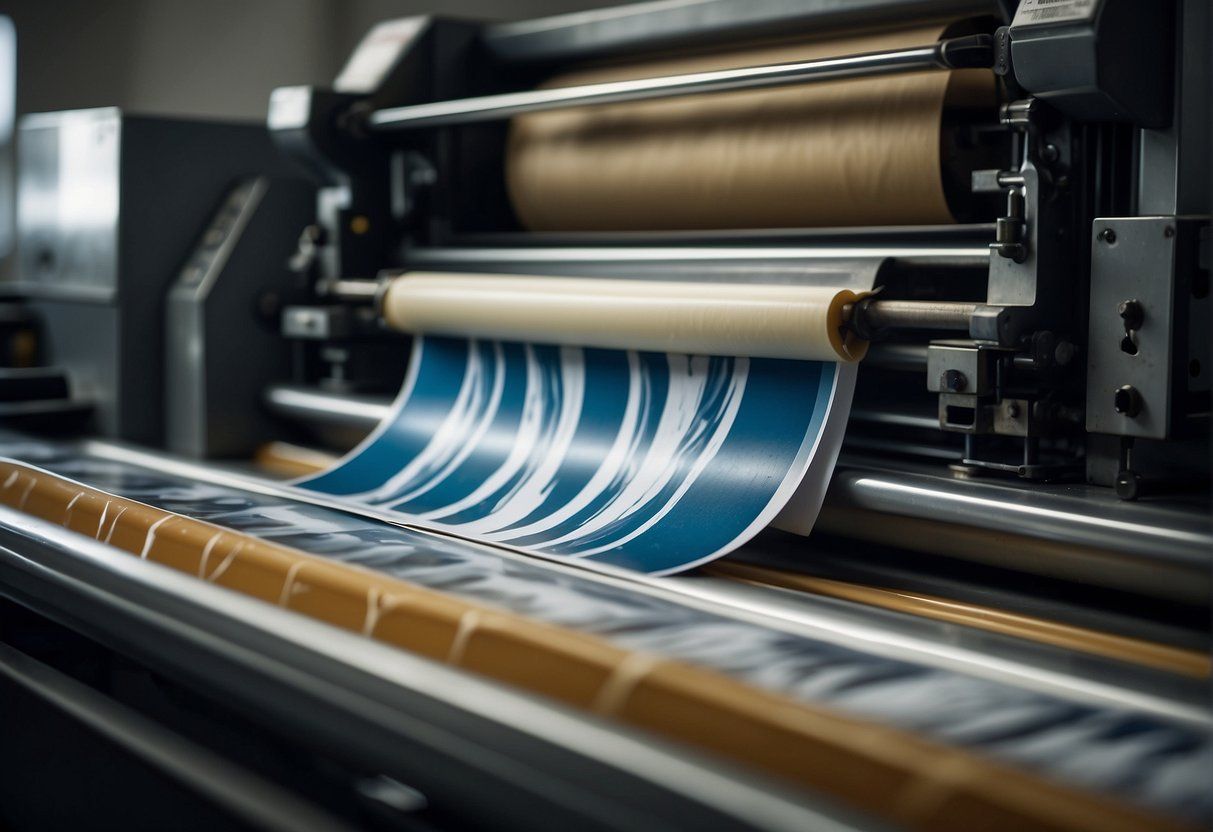
Commercial printing leverages a variety of materials to produce a diverse range of products. The choice of material often depends on the specific application, client needs, and the desired outcome for each product.
Paper and Substrates
In the realm of commercial printing, paper holds a primary position as a choice substrate. From sturdy cardstock for business cards to lightweight bond paper for flyers and brochures, each type has a distinct role and quality. Businesses regularly use coated or uncoated paper, varying in texture and finish, to produce items such as:
- Brochures : Often printed on glossy, coated paper to enhance visuals.
- Business Cards : Typically on heavier, premium cardstock for a professional feel.
- Envelopes and Letterheads : Commonly on bond paper providing a balance of quality and cost-effectiveness.
Substrates such as vinyl and canvas are crucial for items like banners and signage , providing durability for outdoor use.
Promotional Products
Commercial printing extends beyond paper to a multitude of promotional items , each tailored to marketing and branding efforts. Items include:
- Postcards and Flyers : Effective tools for direct mail campaigns, commonly printed in vibrant colors on high-quality paper.
- Banners and Signs : Usually printed on thicker substrates like vinyl for longevity in various conditions.
- Promotional Packaging : Customized boxes, bags, and wrappers designed to enhance brand visibility.
These products serve as tangible touchpoints between businesses and consumers, often the first interaction a potential customer may have with a brand.
Publishing Products
The publishing sector relies heavily on printing services to create physical media. Materials chosen are crucial to the final product’s feel and usability:
- Books : Requires diverse paper types, from the textured paper for covers to acid-free paper for the pages within, ensuring longevity.
- Magazines : Generally opt for glossy, high-quality paper to bring photography and color to life.
- Catalogs : Blend of paper qualities, balancing cost and visual appeal to showcase products.
These products often require intricate binding work alongside quality printing to ensure durability and ease of use.
Marketing and Direct Mail
In commercial printing, direct mail remains an effective method for businesses to conduct direct marketing campaigns that drive consumer engagement and measure success through analytics.
Campaign Strategy
They carefully design the campaign strategy to align with the business’s overall marketing objectives. Crucial to this process are the marketing materials, which act as the primary means of communication and encompass a variety of formats, such as flyers, brochures, and catalogs. The materials must resonate with branding requirements to maintain consistency and recognition. Key aspects of a successful campaign strategy include a structured timeline, a clear call-to-action, and the utilization of automation to streamline distribution and monitor engagement through analytics.
Targeting and Personalization
A target audience is essential in the effectiveness of direct marketing. Commercial printers assist businesses in not just reaching, but also connecting with their audience by using data-driven personalization techniques. Personalization involves tailoring marketing materials to individual preferences, behaviors, and demographics, resulting in a more relevant and engaging experience. Businesses employ advanced analytics to segment their audience and refine their targeting approach, and they leverage automation to efficiently execute personalized campaigns at scale.
Industry Applications
Commercial printing services play a critical role across various sectors by providing high-quality printed materials essential for operations, marketing, and communication activities.
Retail and Fashion
In the retail and fashion industries, commercial printing is indispensable for creating branding materials and marketing campaigns . Printers produce high-resolution catalogs and booklets that showcase product lines with vivid imagery and compelling design. Well-crafted print materials often serve as a tangible extension of a brand’s identity, influencing customer perceptions and driving sales.
- Catalogs : Detailed product listings with images and information.
- In-store Signage : Eye-catching displays that attract and direct customers.
- Packaging : Custom boxes, labels, and bags that enhance brand recognition.
Educational Institutions
For educational institutions , print materials are a foundational element for both instruction and promotion. Academic entities require a broad range of printed content from routine administrative forms to sophisticated educational publications.
- Course Catalogs : Inform students about class offerings.
- Promotional Material : Attract prospective students with brochures detailing campus life, facilities, and academic programs.
- Educational Booklets and Materials : Printed resources that support learning objectives and classroom activities.
Financial and Insurance Services
Financial and insurance services sectors rely heavily on commercial printing for both client-facing and internal documentation . Ensuring the security and professionalism of printed materials is paramount, especially for transactional mail and sensitive financial statements often handled by Fortune 500 companies.
- Transactional Mail : Secure and accurate printing of account statements and bills.
- Policy Documents : Well-organized insurance booklets that provide clear policy details.
- Marketing and Informational Print Materials : Flyers and brochures that explain financial products and services to potential clients, adhering strictly to branding guidelines.
Quality and Standards
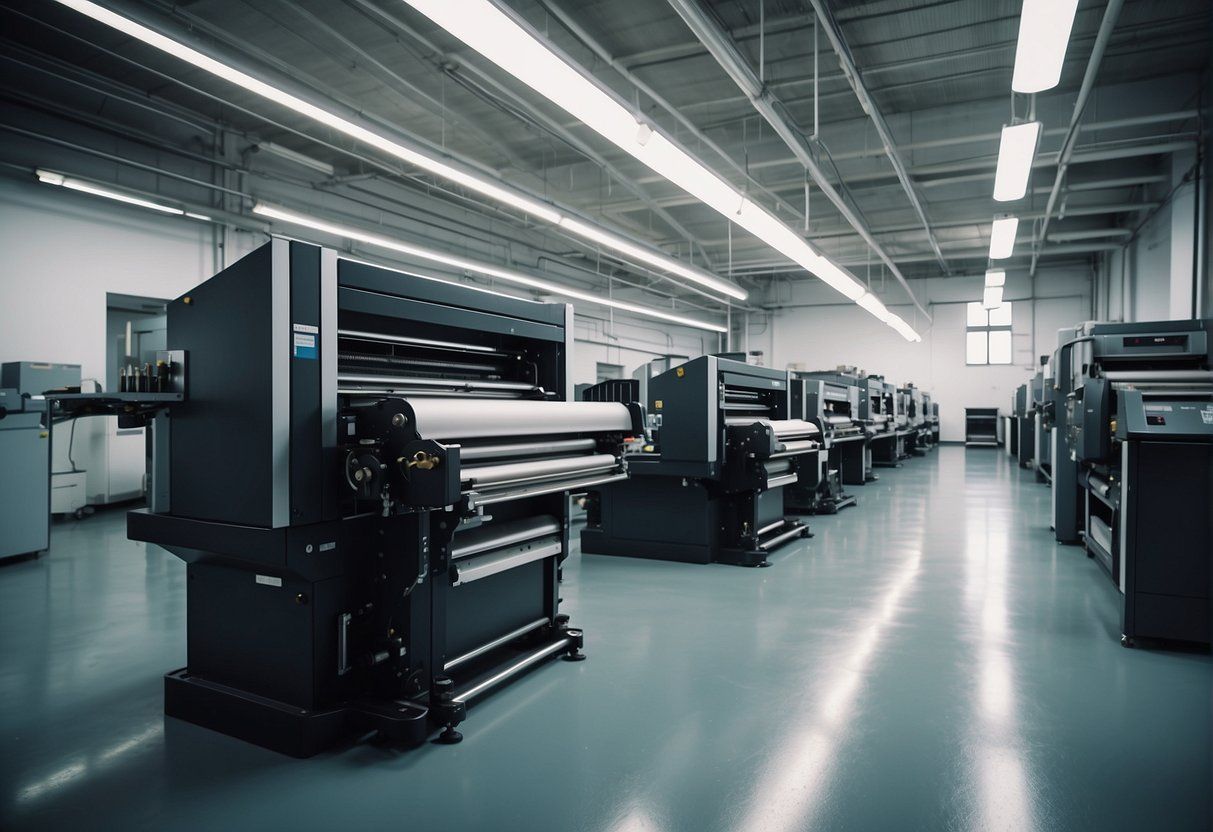
The pursuit of high-quality outcomes in commercial printing hinges on stringent quality control measures and adherence to certifications and compliance standards. These aspects not only bolster a printer’s reputation but also serve as a guarantee of excellence for clients.
Quality Control
In commercial printing, quality control is a pivotal part of the production process. Every print job is subject to a rigorous inspection to ensure the final product meets or exceeds the client’s expectations. Turnaround times and finishes are crucial metrics for quality assessment.
- Turnaround Times: Quick and predictable delivery schedules are maintained without compromising print quality.
- Finishes: A range of finishes, from matte to glossy, is available to enhance the durability and aesthetic appeal of printed materials.
Adherence to sustainability practices during the printing process ensures the minimization of environmental impact, which is becoming increasingly important to both printers and their clients.
Certifications and Compliance
Commercial printers often hold various certifications that testify to their commitment to quality and security .
| Certification | Description |
|---|---|
| ISO 9001 | Represents adherence to quality management principles. |
| FSC | Demonstrates sustainable paper sourcing. |
| HIPAA | Ensures confidentiality in printing materials with personal health information. |
Compliance with these standards assures clients that the printer not only values quality but is also trustworthy and responsible in managing sensitive information. Such certifications establish a solid foundation of trust and are essential for maintaining and enhancing the printer’s reputation in the industry.
Beyond Printing
Commercial printing services have evolved to offer a comprehensive suite of solutions that extend far beyond ink on paper. They encompass a variety of processes and professional services aimed at elevating the final product while ensuring brand consistency and customer satisfaction.
Kitting and Assembly
Kitting refers to the process of assembling individual items into ready-to-ship sets or packages. This service adds versatility and high quality to the fulfillment process. A typical kitting service may include:
- Combining printed materials with promotional items.
- Packaging these combinations with a seamless presentation that reinforces brand identity.
- Utilizing sustainability practices by selecting eco-friendly materials for packaging.
Fulfillment
Fulfillment processes handle the storage, assembly, and shipping of products. Here, analytics play an essential role in tracking inventory levels, minimizing waste, and enhancing customer service .
Graphic Design and Branding
Graphic design services lay the foundation of visual communication for any brand. They are crucial for creating powerful branding and presentation materials that resonate with consumers. Key elements of this process include:
- Crafting a branding strategy that reflects the company’s identity and values.
- Designing marketing materials such as logos, brochures, and business cards that convey a high quality texture and magic to the textual content.
Brand Consistency
Maintaining consistency across various platforms and materials is vital. It ensures that customers have a consistent experience with the brand, which fosters brand recognition and loyalty.
Environmental Considerations
In the context of commercial printing, the environment is a notable stakeholder. As the industry advances, integrating eco-friendly practices and managing waste has become imperative.
Sustainable Practices
Commercial printing often incorporates sustainable practices to reduce its environmental footprint. This includes using materials derived from sustainable sources and implementing green printing techniques. For example, they use inks made from soy or vegetable oils instead of petroleum-based inks. Printers also optimize the use of paper by employing digital printing technologies , which can reduce material waste.
Key sustainable materials:
- Paper: Certified by sustainable forestry initiatives.
- Inks: Soy-based or vegetable-based inks.
- Energy: Renewable energy sources for power.
Additionally, businesses are increasingly adopting energy-efficient equipment and streamlining their processes to minimize resource consumption. They may also offer climate-neutral printing options, in which the carbon footprint of the printing process is calculated and compensated through investments in environmental projects.
Recycling and Waste Management
The commercial printing industry prioritizes recycling as a core aspect of waste management. Printers encourage the recycling of paper products and dispose of non-reusable waste in a responsible manner. With the adoption of digital printing, there is a significant reduction in the use of chemicals, which further facilitates easier waste management.
Key recycling practices:
- Pre-consumer waste: Recycling of production scraps.
- Post-consumer waste: Programs to collect and recycle used paper products.
- Chemicals: Proper disposal and recycling of chemicals used in printing.
By integrating robust recycling programs and waste management strategies, printers can significantly reduce the environmental impact of their operations. Additionally, these practices can also foster a more positive public image and meet the rising demand for eco-friendly products and services.
Client Relationships
In commercial printing, client relationships are pivotal, often predicated on exceptional customer service and the cultivation of lasting partnerships.
Customer Service and Support
The foundation of client relationships in commercial printing lies in outstanding customer service . This sector demands a reactive approach , ensuring that every client request or issue is addressed promptly and effectively. Services often include a guarantee of satisfaction, which not only bolsters the company’s reputation but also instills confidence in clients. Support teams are trained in various industries to offer tailored advice, from direct marketing materials to corporate branding solutions.
- Responsiveness: Ensures issues are resolved quickly.
- Expertise: Offers specific industry knowledge.
- Guarantee: Promises quality and satisfaction.
Building Long-Term Partnerships
Successful commercial printers understand the value of long-term partnerships over one-off transactions. They focus on understanding industry-specific needs, aligning with the client’s direct marketing strategies and branding objectives to offer truly integrated solutions. This approach not only improves the printer’s reputation but also contributes to the branding success of the client. By delivering consistent quality and reliable service, printers become an indispensable part of their client’s operational framework.
- Alignment: Services meet client’s branding and marketing objectives.
- Consistency: Quality products and services build trust.
- Reliability: Becomes a key component of client business models.
Frequently Asked Questions
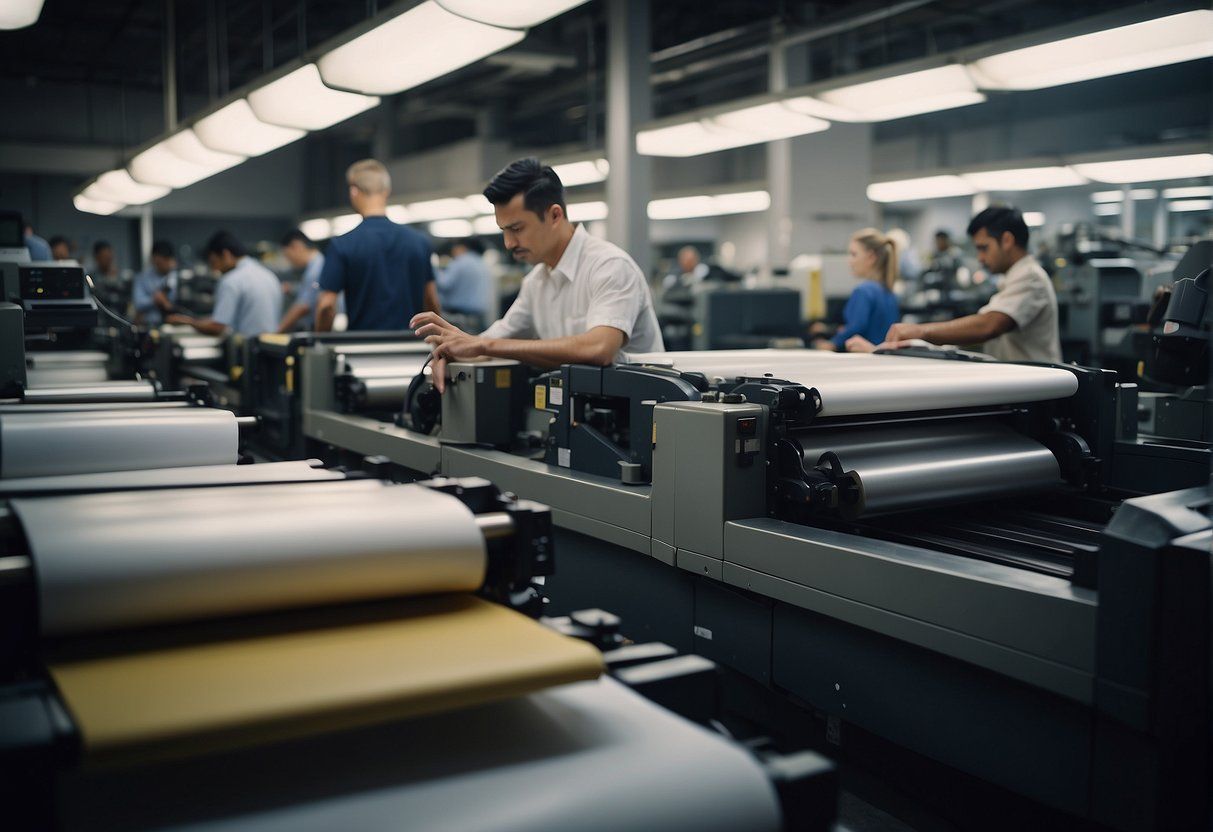
This section brings clarity to common inquiries relating to commercial printing, shedding light on the distinctions, applications, and considerations pivotal to understanding and utilizing this service effectively.
How does large-format commercial printing differ from standard printing processes?
Large-format commercial printing is designed to handle oversized prints such as banners, posters, and trade show graphics. Unlike standard printing, which typically handles sizes up to A3, large-format can print on materials several meters wide, requiring specialized equipment and expertise.
What are some common applications for commercial printing services?
Commercial printing services cater to a wide range of products including business cards, brochures, flyers, packaging, and corporate reports. They are often sought for mass production with consistent high quality, serving the marketing and operational needs of businesses.
What factors should be considered when choosing a printer for commercial use?
Selecting a printer for commercial use demands scrutiny of their printing capabilities, technology used, material quality, turnaround time, and cost-effectiveness. Crucial also is their reliability and history of client satisfaction, as these directly impact the success of printed projects.
How has digital technology impacted the commercial printing industry?
Digital technology has revolutionized the commercial printing industry by offering faster turnaround times, lower costs for short runs, and greater flexibility in terms of customization and personalization. It has also improved precision and consistency in print quality.
What are the essential considerations for maintaining color accuracy in commercial printing?
Maintaining color accuracy in commercial printing involves calibrating printers correctly, using color management software, and ensuring the print material is consistent. It also includes working within the standardized color profiles like CMYK for offset printing and maintaining strict quality control practices.
How can one evaluate the quality and reliability of a commercial printing company?
Evaluating a commercial printing company’s quality and reliability involves examining their portfolio of work, reading customer reviews, and verifying their adherence to industry certifications and standards. One may consider requesting samples or conducting a site visit to assess their operation firsthand.…
